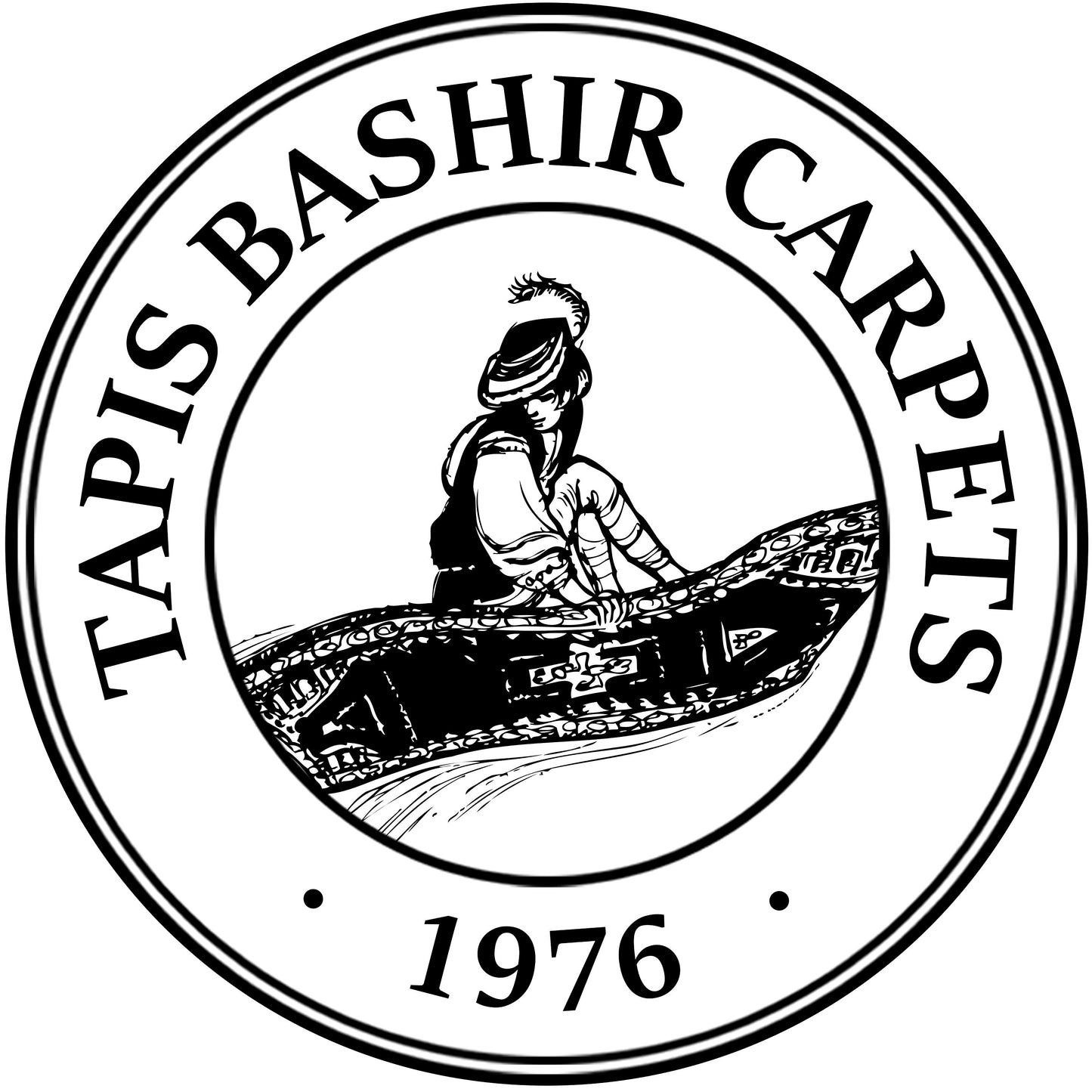Kazakh Runner Rug 10'5" x 3'
Overview
Materials & Craftsmanship:
This fine, diligently hand-knotted area rug contains a perfect blend of 80% pure silk and 20% pure wool. Persian & Oriental rugs made from a high percentage of silk are intricate and are often the most valuable of all handmade carpets. The silk fibers in this piece create a beautiful sheen throughout the field and borders, providing an ultra luxurious feel. The use of silk ensures a precise rendering of the decorative design patterns since strong silk fibers permit skilled weavers to weave more knots per square inch (KPSI) than those of wool carpets. A typical Persian or Oriental rug made from wool might have between 100 and 300 KPSI - a typical 80% silk rug contains between 200 to 500 KPSI. As a result, weaving the rug will require roughly three times the amount of work, and this is one of the main reasons that silk rugs cost two to three times more than wool rugs. The detailing of this particular piece also contains wool, which increases its durability.
The use of eco-friendly vegetable dyes also enriches the yarn of this area rug with a natural and vibrant luster. Vegetable dyes are also referred to as natural dyes and are superior to "synthetic" dyes. In contrast to rugs woven with synthetic colors, this carpet will last for generations due to the high-quality materials and the skilled craftsmanship invested in it.
A Brief History of Kazakh Carpets
 In origin, Kazakh is a tribal name, now a town, river and district in the extreme west of Azerbaijan, the Caucuses. Kazakhs; also known as Qazax, Kazak, Kasak or Gazakh; are noted for their coarse, long-pile carpets with shiny wool, dramatic colors and vigorous designs. Their knots are usually Turkish (Ghiordes knots) and are generally made by weavers who were Turkic nomads, now settled, who came to the region at the time of the great westward migration of Turks in the eleventh century. These carpets were usually made by the women in the families.
In origin, Kazakh is a tribal name, now a town, river and district in the extreme west of Azerbaijan, the Caucuses. Kazakhs; also known as Qazax, Kazak, Kasak or Gazakh; are noted for their coarse, long-pile carpets with shiny wool, dramatic colors and vigorous designs. Their knots are usually Turkish (Ghiordes knots) and are generally made by weavers who were Turkic nomads, now settled, who came to the region at the time of the great westward migration of Turks in the eleventh century. These carpets were usually made by the women in the families.
Kazakh carpets made at the beginning of the 20th century have colors that are synthetic and designs that are less varied and more simplified as compared to the ones made today. Carpets of this period however still offer good resistance although they are less appealing from an artistic point of view. Today there is a large production of new Kazakh carpets in Pakistan which are inspired by Caucasian designs and are made up of lively colors that are from natural vegetable dyes. These carpets are long lasting and have a short pile. Kazakh carpets blend equally well in classic environments as they do in contemporary settings.
Sources and inspiration: Bérinstain, Valérie, et al. L'art du tapis dans le monde (The art of carpets in the world). Paris: Mengès, 1996. Print.; Jerrehian Jr., Aram K.A. Oriental Rug Primer. Philadelphia: Running Press, 1980. Print.; Herbert, Janice Summers. Oriental Rugs, New York: Macmillan, 1982. Print.; Hackmack, Adolf. Chinese Carpets and Rugs, Rutland and Tokyo: Tuttle, 1980. Print. ; De Moubray, Amicia, and David Black. Carpets for the home, London: Laurence King Publishing, 1999. Print.; Jacobsen, Charles. Oriental Rugs A Complete Guide, Rutland and Tokyo: Tuttle, 1962. Print.; Bashir, S. (n.d.). Personal interview.; Web site sources and dates of consultation vary (to be confirmed). Without prejudice to official usage.
- Choosing a selection results in a full page refresh.
- Opens in a new window.



 Runner Rugs
Runner Rugs 2x3 Area Rugs
2x3 Area Rugs 3x5 Area Rugs
3x5 Area Rugs 4x6 Area Rugs
4x6 Area Rugs 5x7 Area Rugs
5x7 Area Rugs 6x9 Area Rugs
6x9 Area Rugs 8x10 Area Rugs
8x10 Area Rugs 9x12 Area Rugs
9x12 Area Rugs 10x14 Area Rugs
10x14 Area Rugs Round Rugs
Round Rugs Bath Mats
Bath Mats Doormats
Doormats 12x15 Area Rugs
12x15 Area Rugs




















